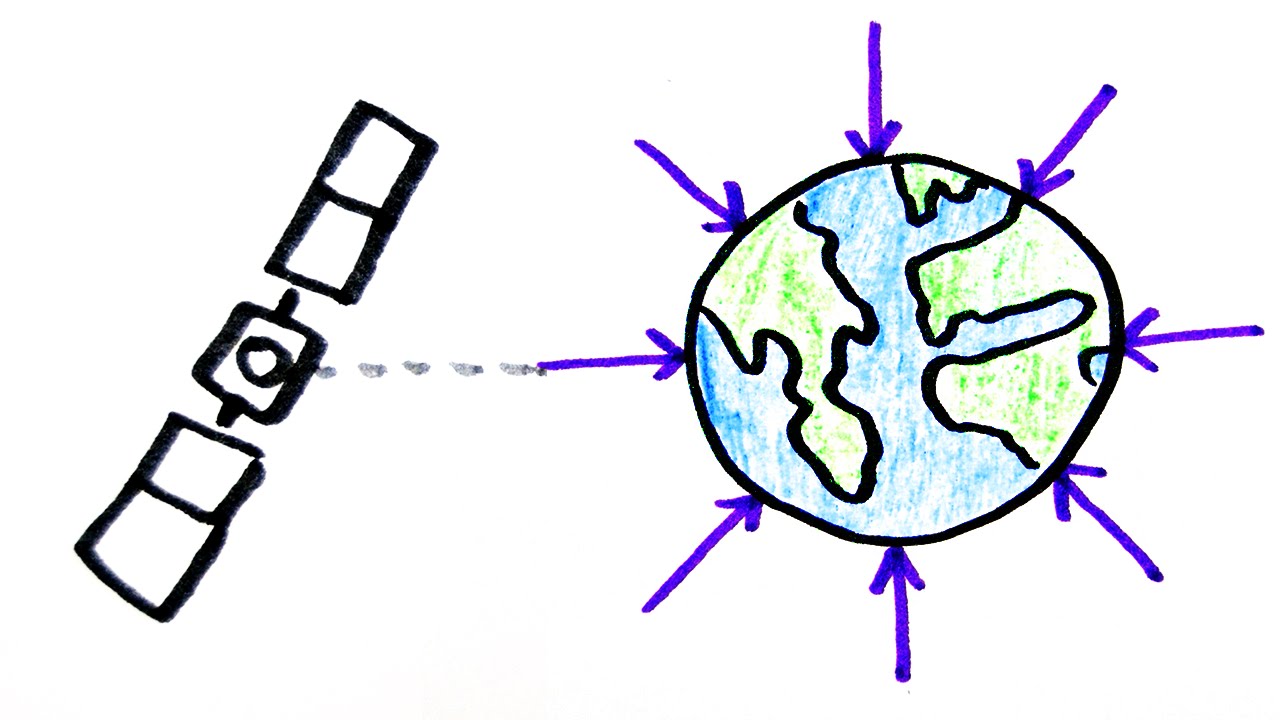
Gauss’s Law of Gravitational Fields is a fundamental concept in physics that revolutionized our understanding of gravity. Named after the renowned mathematician and physicist Carl Friedrich Gauss, this law provides a mathematical description of the gravitational field created by an object.
Intriguing and fascinating, Gauss’s Law of Gravitational Fields has countless applications in various fields, from astrophysics to engineering. In this article, we will delve into nine intriguing facts about this law, shedding light on its significance and exploring its complexities.
Whether you’re a physics enthusiast or simply curious about the mysteries of the universe, join us as we uncover the fascinating world of Gauss’s Law of Gravitational Fields and the profound impact it has had on our understanding of gravity.
Key Takeaways:
- Gauss’s Law of Gravitational Fields helps us understand how gravity is distributed in space and calculate the total gravitational force acting on an object within a closed surface.
- This law applies to both point masses and continuous mass distributions, and it’s not just limited to Earth but extends to celestial bodies, making it a universal tool for studying gravity in the universe.
Gauss’s Law of Gravitational Fields provides a mathematical description of the distribution of gravitational forces.
Gauss’s Law of Gravitational Fields, named after the renowned mathematician Carl Friedrich Gauss, is a fundamental principle in physics that enables us to understand how gravitational forces are distributed in space. It relates the gravitational field to the distribution of mass in a given region.
Gauss’s Law of Gravitational Fields helps in calculating the gravitational flux through a closed surface.
One of the key applications of Gauss’s Law of Gravitational Fields is to calculate the gravitational flux through a closed surface. This flux represents the total gravitational field passing through the surface and can be used to find the net gravitational force acting on an object within that surface.
Gauss’s Law of Gravitational Fields applies to both point masses and continuous mass distributions.
Whether dealing with a single point mass or a continuous distribution of mass, Gauss’s Law of Gravitational Fields holds true. It allows for the calculation of the gravitational field and force experienced by objects in the vicinity of the mass distribution.
Gauss’s Law of Gravitational Fields is closely related to Newton’s Law of Universal Gravitation.
Newton’s Law of Universal Gravitation states that every particle in the universe attracts every other particle with a force that is directly proportional to the product of their masses and inversely proportional to the square of the distance between them. Gauss’s Law of Gravitational Fields helps us understand the distribution of these forces.
Gauss’s Law of Gravitational Fields is defined using an integral equation.
The mathematical formulation of Gauss’s Law of Gravitational Fields involves integrating the gravitational field over a closed surface and relating it to the enclosed mass. This integral equation provides a quantitative understanding of the distribution of gravitational forces.
Gauss’s Law of Gravitational Fields obeys the principle of superposition.
The principle of superposition states that the net gravitational field due to multiple mass distributions is the vector sum of the individual gravitational fields created by each distribution. Gauss’s Law of Gravitational Fields allows us to analyze and calculate the total gravitational field in complex scenarios.
Gauss’s Law of Gravitational Fields verifies the inverse square law of gravity.
By applying Gauss’s Law of Gravitational Fields to a spherical mass distribution, we can deduce the inverse square law of gravity, which states that the gravitational force between two objects is inversely proportional to the square of the distance between their centers.
Gauss’s Law of Gravitational Fields holds true in both classical physics and general relativity.
Whether we are studying gravitational fields in the realm of classical physics or delving into the complexities of general relativity, Gauss’s Law of Gravitational Fields remains a fundamental principle. It provides a mathematical framework for understanding the behavior of gravity in different physical theories.
Gauss’s Law of Gravitational Fields is applicable not only to Earth but also to celestial bodies and beyond.
Gauss’s Law of Gravitational Fields is not limited to Earth but extends to the gravitational interactions between celestial bodies, such as planets, stars, and galaxies. It serves as a universal tool for studying the gravitational behavior of objects throughout the universe.
Conclusion
In conclusion, Gauss’s Law of Gravitational Fields is a fascinating concept in physics that allows us to understand the behavior and distribution of gravitational fields. Its application in various celestial bodies, from planets to galaxies, helps us unravel the mysteries of the universe.Throughout this article, we have explored nine intriguing facts about Gauss’s Law of Gravitational Fields. From its connection to Newton’s law of gravity to its manifestation in the inverse square law, these facts shed light on the profound impact of this law on our understanding of gravity.We have also delved into the concept of gravitational flux and how it relates to Gauss’s Law. The notion that gravitational field lines are representative of the distribution of mass is truly remarkable, and it enables physicists to make predictions and analyze complex gravitational systems.Overall, Gauss’s Law of Gravitational Fields is an essential tool in the study of gravity and its effects on celestial bodies. By grasping its fundamental principles and exploring its applications, we can deepen our understanding of the universe and the forces that govern it.
FAQs
Q: What is Gauss’s Law of Gravitational Fields?
A: Gauss’s Law of Gravitational Fields is a fundamental concept in physics that relates the distribution of mass to the resulting gravitational field. It enables us to predict and analyze the behavior of gravitational fields in various systems.
Q: How is Gauss’s Law of Gravitational Fields related to Newton’s law of gravity?
A: Gauss’s Law of Gravitational Fields is closely connected to Newton’s law of gravity. While Newton’s law of gravity provides a mathematical formula to calculate the force of gravity between two objects, Gauss’s Law allows us to analyze the gravitational field created by a distribution of mass.
Q: Does Gauss’s Law of Gravitational Fields apply only to planets and stars?
A: No, Gauss’s Law of Gravitational Fields applies to any system where gravitational fields are present. It can be used to analyze the gravitational fields generated by celestial bodies of various sizes, from small asteroids to massive galaxies.
Q: Can Gauss’s Law of Gravitational Fields be applied to systems outside of our solar system?
A: Yes, Gauss’s Law of Gravitational Fields can be applied to systems both within and beyond our solar system. It is a universal law that can be used to study and understand the gravitational fields of objects and systems throughout the universe.
Q: How does Gauss’s Law of Gravitational Fields relate to the inverse square law?
A: The inverse square law states that the strength of a force decreases as the square of the distance from the source increases. Gauss’s Law of Gravitational Fields is consistent with this law, as it describes how the gravitational field strength weakens with distance from a mass, following an inverse square relationship.
Q: What is gravitational flux?
A: Gravitational flux is a quantity that measures the amount of gravitational field passing through a closed surface. It helps us understand the distribution of mass within a system and is an important concept in Gauss’s Law of Gravitational Fields.
Q: How can Gauss’s Law of Gravitational Fields be applied to study celestial objects?
A: Gauss’s Law of Gravitational Fields can be applied to analyze the gravitational fields of celestial objects by considering the mass distribution within them. By using this law, scientists can make predictions about the behavior of planets, stars, galaxies, and other cosmic structures.
Q: What are the practical applications of Gauss’s Law of Gravitational Fields?
A: Gauss’s Law of Gravitational Fields has numerous practical applications. It allows astronomers to study and understand the structure and behavior of galaxies, determine the orbits of planets, and make predictions about the motion of celestial bodies. It also contributes to our understanding of gravitational waves and their detection.
Q: Is Gauss’s Law of Gravitational Fields only applicable to large-scale systems?
A: No, Gauss’s Law of Gravitational Fields can be applied to systems of any size, from small objects to large-scale structures. It provides valuable insights into the gravitational fields present in a given system, regardless of its scale.
Gauss's Law of Gravitational Fields is just one fascinating aspect of the world of physics. If you're curious to learn more, why not explore the intriguing facts about Gauss's Law itself? Or, if you're interested in the biological side of things, metabolic flux analysis might pique your interest. And for those who can't get enough of gravity's mind-bending effects, gravitational lensing is sure to captivate you. No matter which path you choose, there's always more to discover in the realm of science.
Was this page helpful?
Our commitment to delivering trustworthy and engaging content is at the heart of what we do. Each fact on our site is contributed by real users like you, bringing a wealth of diverse insights and information. To ensure the highest standards of accuracy and reliability, our dedicated editors meticulously review each submission. This process guarantees that the facts we share are not only fascinating but also credible. Trust in our commitment to quality and authenticity as you explore and learn with us.


